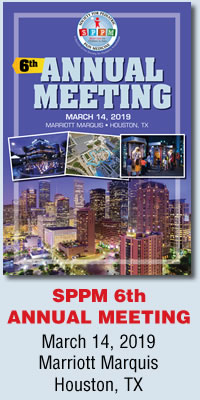Editor's Corner
Knowing the Complications of Pediatric Regional Anesthesia
 By Yuan-Chi Lin, MD, MPH, FAAP; Francis Kraemer, MD; Meredith R. Brooks, MD, MPH
By Yuan-Chi Lin, MD, MPH, FAAP; Francis Kraemer, MD; Meredith R. Brooks, MD, MPH
Welcome to the Fall 2018 issue of the SPPM News. We thank Dr. Anjana Kundu and the Board Directors for their outstanding leadership, tireless efforts and marvelous contributions for our society. We have 678 members in our SPPM family!! The SPPM News provides updates on the current growths in SPPM, improves our knowledge in pediatric pain medicine, improves patient care, and advances pediatric pain-related research.
There is an increasing interest and need for pediatric regional anesthesia services. This is supported by the efficacy and safety of the techniques. Regional anesthesia is a technique that is available and appropriate in the pediatric population. In this Fall issue of the SPPM News, we are very fortunate to have leaders in this field present the complications in pediatric regional anesthesia. Before performing regional blocks, we should always try our best to prevent the complications. We need to present the risks and benefits of regional anesthesia to our patients. It is a non-compulsory procedure; we need to present our patients with available options. It is also necessary that we give patients enough time, and allow them to think it over before signing the consent.
Drs. Alan Bielsky, Melissa Masaracchia, and Beth Boulden Warren, from Children’s Hospital Colorado Anschutz Medical Campus address Bleeding and Blocks: New Medicine, Still More Questions. Drs. Carole Lin and Ban Chi-Ho Tsui from Lucile Packard Children’s Hospital at Stanford present Infectious Complications in Pediatric Regional Anesthesia. Drs. Harshad Gurnaney and Arjunan Ganesh, from the Children’s Hospital of Philadelphia report Neurological Complications of Pediatric Regional Anesthesia. Drs. Mauricio Arce Villalobos, Tarun Bhalla, and Joseph Tobias update the Local Anesthetic Systemic Toxicity. Drs. Werner Schmid and Peter Marhofer from Medical University of Vienna, Austria discuss Pediatric Neuraxial Regional Anesthesia: How Much Sedation is Required? The Pediatric Regional Anesthesia Network (PRAN) offers a very unique opportunity to examine the practice patterns and incidences of complications. Dr. Benjamin Walker, from University of Wisconsin School of Medicine and Public Health, presents the most recent Lessons Learned from the Pediatric Regional Anesthesia Network.
The annual meetings of the Society for Pediatric Anesthesia and American Society of Anesthesiologists in San Francisco were a huge success with more than 14,000 attendees. There were numerous and exciting pediatric acute pain, chronic pain and regional anesthesia research paper presentations. In this newsletter, we are very fortunate to have the presenting authors submit summaries of their important research work to share with SPPM members. In addition, we thank our former SPPM president, Dr. Sabine Kost-Byerly, for providing us with an excellent current literature review.
The Society for Pediatric Pain Medicine’s 6th Annual Meeting will be held on March 14, 2019, at the Marriott Marquis in Houston, Texas. This is going to be another exciting SPPM conference. This event will focus on new challenges in pediatric pain management that we are all facing in our practices in pediatric pain medicine. Dr. Vidya Chidambaran provides a nice overview of the meeting in our newsletter.
We greatly appreciate the opportunity to serve as the editors for this SPPM News. We would love to hear from you and have your contributions in our newsletter.
Please feel free to contact us with any questions, suggestions, or comments:
Yuan-Chi Lin, MD, MPH, FAAP
[email protected]


